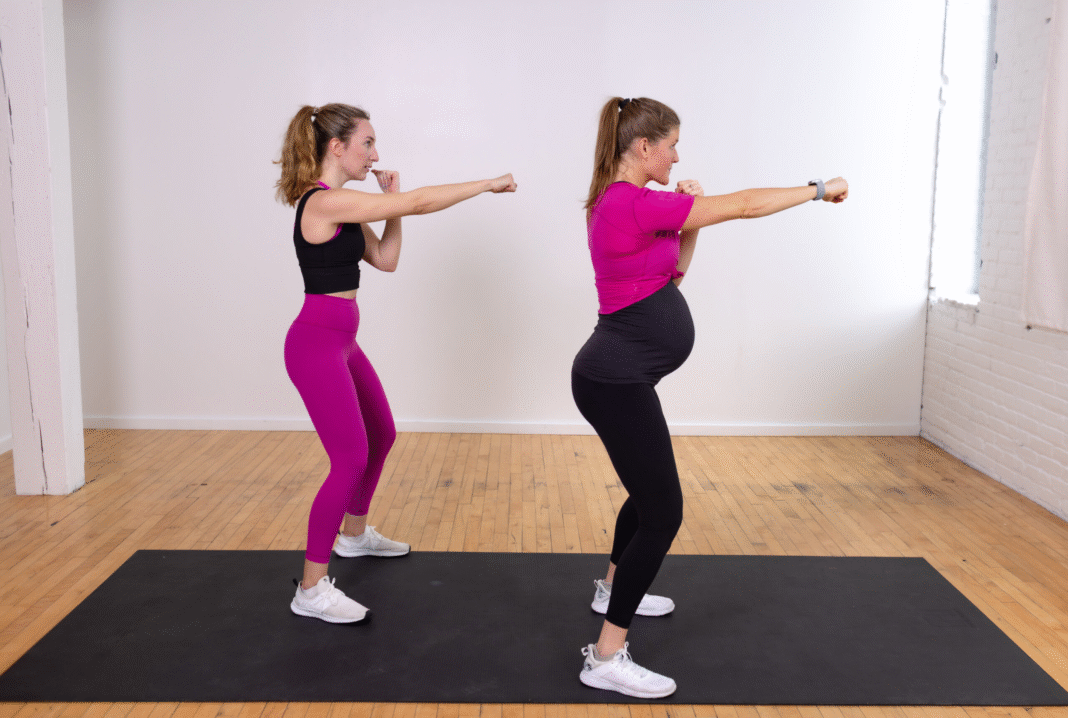Pregnancy is a beautiful journey, and staying active can make it even smoother. But it’s natural to feel uncertain about which exercises are safe when you’re expecting. The good news is — with the right guidance, pregnant women can enjoy safe and effective workout routines right at home.
In this article, we’ll explore simple, safe, and pregnancy-friendly workout routines you can do from the comfort of your home. Whether you’re in your first trimester or nearing your due date, these workouts can help improve your mood, strengthen your body, and prepare you for labor.
Benefits of Exercising During Pregnancy
Before diving into the routines, here are a few key benefits of working out while pregnant:
- Improves posture and reduces backaches
- Increases energy levels
- Helps with better sleep
- Reduces stress and anxiety
- Strengthens muscles for labor and recovery
- Helps manage healthy weight gain
Always check with your doctor before starting any workout program, especially if you have complications or a high-risk pregnancy.
General Safety Tips
To keep your workouts safe:
- Stay hydrated and avoid overheating
- Wear comfortable clothes and supportive footwear
- Avoid lying flat on your back after the first trimester
- Listen to your body — rest when needed
- Avoid high-impact or risky movements (e.g., jumping, contact sports)
Safe Home Workout Routines for Pregnant Women
Here are some gentle and effective home workouts you can try during pregnancy. These are suitable for all trimesters unless your healthcare provider advises otherwise.
Prenatal Walking in Place (5–10 minutes)
If you don’t have space to walk around, just march or walk in place!
How to do it:
- March with soft steps, lifting your knees gently
- Swing your arms naturally
- Do it for 5 to 10 minutes as a warm-up
✅ Benefits: Gets your blood flowing, warms up the body
Pelvic Tilts (5–10 reps)
Great for strengthening the lower back and easing discomfort.
How to do it:
- Stand against a wall or get on all fours
- Gently arch your back, then flatten it (like a cat-cow motion)
- Breathe deeply during each movement
✅ Benefits: Relieves lower back pain, strengthens abdominal muscles
Wall Push-Ups (10–15 reps)
Safer than regular push-ups and perfect for upper body strength.
How to do it:
- Stand facing a wall, arms shoulder-width apart
- Step back slightly, then bend elbows to lean toward the wall
- Push back to the starting position
✅ Benefits: Tones arms, shoulders, and chest without straining
Seated Leg Lifts (10 reps each leg)
Strengthens your legs without standing too long.
How to do it:
- Sit on a chair with a straight back
- Slowly lift one leg, hold for a few seconds, and lower it
- Switch legs and repeat
✅ Benefits: Improves circulation, reduces leg swelling
Modified Squats (10–15 reps)
Helps prepare your body for labor.
How to do it:
- Stand with feet shoulder-width apart
- Hold onto a chair or wall for support
- Slowly lower into a squat (don’t go too low), then stand up
✅ Benefits: Strengthens legs, hips, and pelvic floor muscles
Prenatal Yoga (10–20 minutes)
A mix of gentle stretches and breathing exercises.
Try poses like:
- Cat-Cow Stretch
- Butterfly Pose
- Child’s Pose (wide-knee variation)
- Deep belly breathing
✅ Benefits: Enhances flexibility, reduces stress, improves posture
Kegel Exercises (3 sets of 10 reps)
Strengthens your pelvic floor, helping with bladder control and childbirth.
How to do it:
- Tighten the muscles you’d use to stop urinating
- Hold for 5 seconds, then relax for 5 seconds
- Repeat several times daily
✅ Benefits: Supports delivery and postpartum recovery
Bonus: Relaxation & Stretching Routine (5–10 minutes)
End your workout with light stretching:
- Neck rolls
- Arm and shoulder circles
- Side stretches
- Gentle calf stretches
Add deep breathing or a short meditation session for complete relaxation.
When to Stop Exercising
Stop your workout and call your doctor if you experience:
- Dizziness or feeling faint
- Shortness of breath before starting
- Chest pain or rapid heartbeat
- Painful contractions
- Bleeding or fluid leakage
- Swelling or calf pain
Your safety and your baby’s health always come first.
Final Thoughts
Exercising during pregnancy doesn’t have to be complicated or intimidating. With a little care and consistency, you can stay active, feel stronger, and support your body through the incredible journey of motherhood.
Always prioritize your comfort and never push too hard. Remember — every pregnancy is different, so what feels good for one person may not be right for another.
FAQs: Safe Pregnancy Workouts at Home
1. Can I do squats while pregnant?
Yes, modified squats with support are usually safe and help strengthen the pelvic area. Just don’t go too deep or strain your knees.
2. Is yoga safe during pregnancy?
Absolutely! Prenatal yoga is safe and beneficial. Avoid poses that involve lying flat on your back or twisting deeply.
3. How often should I work out during pregnancy?
Aim for 20–30 minutes of moderate activity most days of the week, depending on how you feel and what your doctor suggests.
4. Are home workouts as effective as gym workouts?
Yes! Home workouts can be just as effective when done correctly and consistently, especially during pregnancy.
5. What’s the best time of day to work out while pregnant?
Whenever you feel most energized! Many women prefer mornings, but listen to your body and find a time that works for you.


